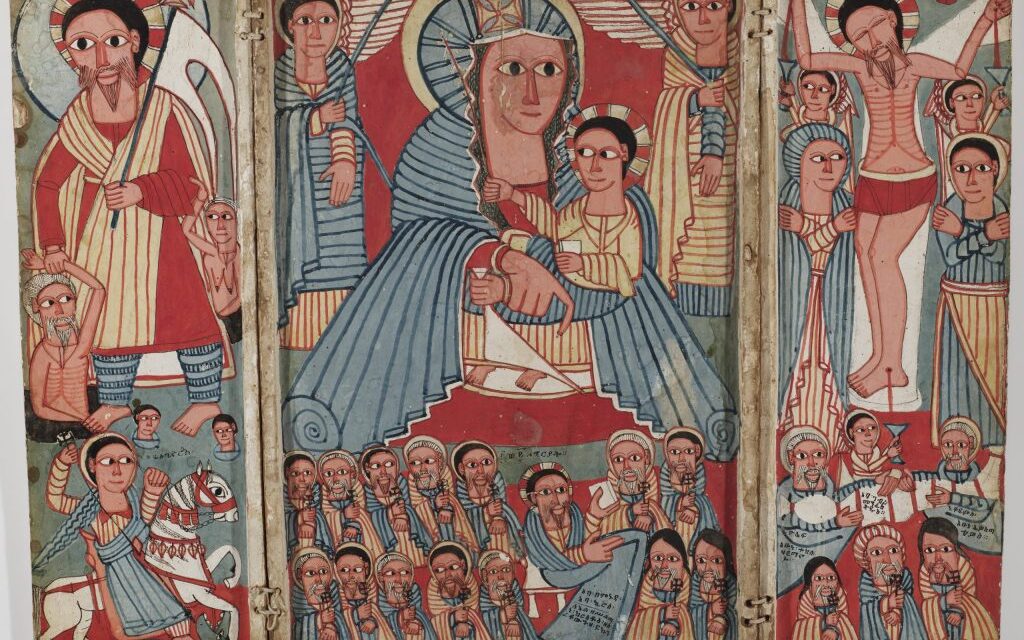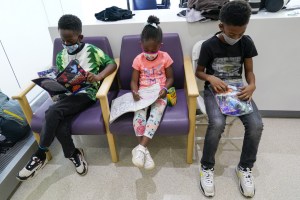By Aria Brent
AFRO Staff Writer
abrent@afro.com
The Walters Art Museum opened their latest art exhibit “Ethiopia at the Crossroads” to the public on Dec. 3. The exhibit has 1,750 years worth of Ethiopian art, antiques and artifacts that display the African nation’s rich history from a cultural, artistic and religious standpoint.
Home of more than 220 historical Ethiopian objects, the Walters has a world-renowned collection that has been amplified by lenders in America, Europe and Ethiopia, making for a display of Eastern African culture like no other.
Before the exhibit made its debut, the AFRO spoke with art curator Christine Sciacca about all the planning that went into this exhibit, what guests can anticipate when visiting and what this display of art is bringing to the Baltimore area.
“We show Ethiopian art in a slightly different way. A lot of times when you visit museums, if you’re lucky enough to see Ethiopian art it’ll be shown with African art, but we will be showing it in the context of Christian art. We hope that this really does resonate with our broader community here in Baltimore.”
AFRO: How did the creation of this exhibit come about ?
Sciacca: “This exhibit was actually an idea I proposed at my interview for this job. I started working at the Walters about six years ago and I heard about their incredible Ethiopian art collection. It’s one of the largest outside of Ethiopia.”
AFRO : With over 1,750 years of art and artifacts to choose from, what influenced you to choose the pieces shown in the exhibit ?
Sciacca: “I did the impossible and included all 1,700 years worth of artwork. I was really interested in seeing how Ethiopia was not an isolated place; it was very interactive with all the different regions around it such as other parts of Africa, Europe and Asia as well. What I thought about doing was taking that collection and looking at different points throughout Ethiopian history. It started with our collection–we have the earliest material of coins that come from the rulers of the Aksumite kingdom. I broke the exhibit up into different points of interaction. Here at the Walters we collect mostly the Christian art of Ethiopia. A lot of people don’t realize Ethiopia was the second Christian nation on the planet. They adopted Christianity in the mid-fourth century, so a lot of their artwork was for the church. Our collection really focuses on that Christian art of Ethiopia; I needed to take loans from other places. We have 25 lenders for the exhibition to help fill out the whole story about what Ethiopia was throughout its history and what it is today.”
AFRO: What can visitors anticipate from this exhibit ?
Sciacca: “I really wanted it to be an immersive experience. A person in Ethiopia understands the landscape; they know the sights, the smells, the sounds. But many visitors won’t have that experience. We’ve done a gallery with some big wall murals showing scenes of ancient Aksum which still exist today. We also have scent cards that will be placed throughout the show at three different stations. We have one that smells like frankincense, another where you can smell berbere spice, which is a very common spice in Ethiopian cooking, and the third one is the smell of an Ethiopian manuscript. It’s a full manuscript and you’ll be able to see what they smell like. They have a very distinct smell. I’m not Ethiopian myself so I had a very helpful advisory committee from the community here in the DMV who gave me lots of advice about these things. I really relied on them to guide the decisions that I made about what this should be. We were able to capture some of their voices in videos that we’ll see in the exhibition. We’re going to have a church service at an Ethiopian church in Washington. We have little sound bites from various community advisory members talking very clearly about what is the significance of Ethiopian art to them. It’s different when you’re the voice in your own area and when you’ve lived and grown up with this culture. That was important for me to hear those voices in conjunction with the Ethiopian language.”
AFRO: Why does the Baltimore community need something like this ?
Sciacca: “The DMV in general has the largest Ethiopian diaspora population in the U.S. by far, but also only blocks away from the Walters is little Ethiopia, where there are Ethiopian-owned restaurants and shops. We have that right here in Baltimore. We started collecting Ethiopian art here at the Walters in the 1990s. We were actually the first to do a major exhibition of Ethiopian art, at all, in the U.S. It was a show called ‘African Zion’ and it opened in 1993. It started at the Walters and then traveled to seven different venues across the United States. That was really the first exhibition to show Ethiopian art to American audiences. I think the thinking with that was to connect with the very strong Ethiopian audience in the area, but also the general African-American population in the Baltimore area as well. They felt that there was a broader connection to be made, and with this exhibition we’re hoping to continue that. We show Ethiopian art in a slightly different way. A lot of times when you visit museums if you’re lucky enough to see Ethiopian art it’ll be shown with African art, but we will be showing it in the context of Christian art. We hope that this really does resonate with our broader community here in Baltimore.”
AFRO: Although Ethiopia is so diverse can you talk to me about how vital this exhibit is to both historic and modern Black history and culture ?
Sciacca: “I think the broader impact is all those connectors that have happened abroad. In addition to what’s happening in the present day – in terms of contemporary art extending beyond Ethiopia’s borders – it’s also showcasing the significance of Ethiopia never having been colonized, and that’s a point of pride for Ethiopians, but I think for the broader community as well, from my understanding. This, to me, is highlighting one of the great cultures out of Africa and how long tradition has been in Ethiopia and how important it is for the history of Africa.”
This article has been edited for clarity.
The post The Walters Art Museum opens new exhibit displaying 1,750 years of Ethiopian art appeared first on AFRO American Newspapers .









